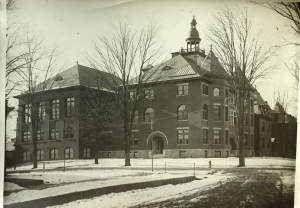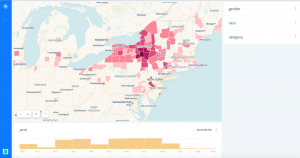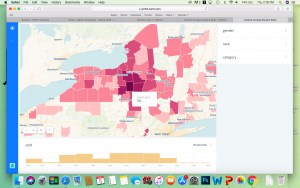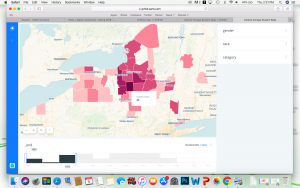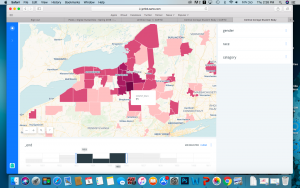https://amoriegreen.carto.com/builder/844a6b79-c2bb-46a2-ae54-02c5cbc2db39/embed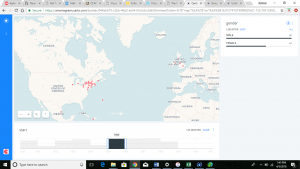
This map helped us to discover that at this time, the students of Central College contained 672 males, 360 females, and 24 unknown gender. The data displayed that there were much more male students than female students at this time, with males being almost double the amount of females. We discovered that some male students came from Cuba, Mexico, Ghana, Senegal, the United Kingdom, and Ireland, but most came from the United States, specifically the Northeast. Most female students are from the Northeast, with only one being from France; this shows that there is much less diversity of the origin of female students than male students. We also discovered that more females enrolled at the beginning of the college’s existence than the end, showing a steady decline over time; the year with the most females was 1855 with 53 enrolled at one time.

